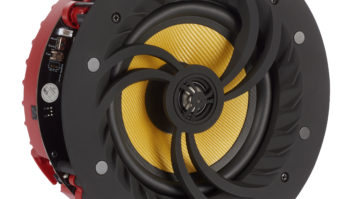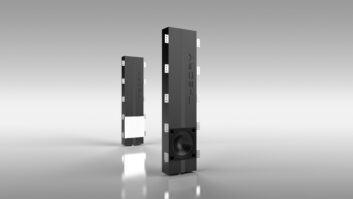Robust growth in MP3-type music portables will entice new entrants into the market, prompt others to expand their selections, and enable more suppliers to segment the market with their first sports-style models.
Sales of flash-memory and hard-disk-drive (HDD) music portables are growing faster than any other segment in home, portable and car audio, suppliers said.
Here at CES, dealers will find expanded selections from Panasonic, Philips, Samsung and Memorex, the first portable devices from BenQ and start-up Auvi, and the first sports-style models from Samsung and Panasonic. A greater selection of high-capacity HDD models will also turn up, including a greater selection of tiny models built on 1-inch HDDs like a current Rio model. Suppliers such as RCA, Philips and Samsung will expand their HDD assortment.
Acknowledging the proliferation of authorized download services that have adopted the Windows Media audio (WMA) codec and DRM (digital-rights management technology), suppliers will offer more models supporting the codec and DRM. Creative Labs and Samsung, for example, will adopt the WMA DRM in all new flash-memory and HDD music portables, and BenQ promises to do so in future models. RCA said its intention is to support authorized download services with the launch of its new products.
In 2003, factory-level unit sales continued to grow at high double-digit rates ranging anywhere from 50 percent to 65 percent depending on the supplier polled. Dollar sales are also rising despite falling prices because of the shift toward more expensive HDD models.
Suppliers such as Creative, RCA and Panasonic attributed continued growth to Apple’s aggressive promotion of its iPOD portables, the launch of multiple authorized download services, the growing selection of portables compatible with those services, and the growing affordability of high-capacity flash-memory and HDD models.
Sales could have risen even more, said RCA business development director Rich Phipps, if it weren’t for flash-memory shortages that, as of early December, hadn’t shown signs of abating. Despite the shortages, he noted, prices of flash-memory models continued to fall, in part because of the influx of new competitors.
Panasonic product manager Yong Lee noted that the flash-memory shortages have occurred mainly in removable memory cards, whose demand has grown with the proliferation of products incorporating memory-card slots.
The popularity, falling prices and growing capacity of MP3 portables prompted one marketer, Creative senior brand manager Lisa O’Malley, to forecast continued growth in the population of two-device owners. Many HDD owners, she said, will buy flash-memory devices for use during vigorous activities such as jogging and workouts at the gym.
One company estimates 2003 factory-level U.S. sales at 2.7 million units and $300 million, up 50 percent and 37 percent, respectively. That company projects 2004 unit-sales growth of 30 percent to 3.5 million and dollar growth of 15 percent to $345 million.
Another supplier estimates 2003 factory-level unit-sales gains of 65 percent to 2.8 million, and the supplier projects 50 percent unit growth in 2004 to 4.2 million. In 2005, the supplier projects a 24 percent gain to 5.2 million units.
A third supplier estimates 2003 unit and dollar growth at 53 percent and 46 percent, respectively, and forecasts 2004 unit and dollar growth of 14 percent and 29 percent, respectively.
Flash-memory models account for the majority of unit sales to consumers, but in dollar terms, HDD models are getting close to flash-memory volume levels, RCA and Creative said. In 2003, HDD models accounted for around 45 percent of dollar volume, Creative noted.
At least one supplier, however, estimates that HDD models already accounted for 51 percent dollar share in 2003 but only 30 percent of unit sales. The supplier expects HDD unit and dollar share to remain steady in 2004. In 2002, HDD share was 40 percent in dollars and 22 percent in units, this supplier said.
Another supplier, Philips, projects HDD dollar share will hit 60 percent in 2004, up from 2003’s estimated 40 percent.
Whatever the gains, sales of flash-memory and HDD-based music portables are small in comparison to sales of headphone cassette and CD players. Factory-level sales of those products in 2003 were projected by CEA to hit 28.4 million in units and account for revenues of $1.2 billion.
Growth is such that some suppliers are even considering 1GB flash-memory portables despite their high cost compared to HDD models. The flash models could be lipstick-case size, and they would achieve longer battery lives because they lack mechanical parts. Nonetheless, they would have to retail for up to about $399 at a time when 1.5GB HDD models were retailing at the end of 2003 for less than $279.
“HDDs will always have an inherent cost advantage at higher capacities,” said RCA’s Phipps, citing the economies of scale as HDDs appear in a greater variety of products, from camcorders to PDAs and cellphones.













